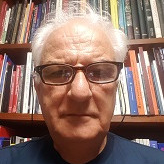Quantum Dynamics with Non-hermitian Hamiltonians II
A special issue of Entropy (ISSN 1099-4300). This special issue belongs to the section "Quantum Information".
Deadline for manuscript submissions: 17 June 2024 | Viewed by 4352
Special Issue Editors
Interests: non-Hermitian quantum mechanics; quantum-classical hybrid systems; non-adiabatic dynamics; non-Hamiltonian systems; open quantum systems
Special Issues, Collections and Topics in MDPI journals
Interests: quantum electrodynamics; open systems; time dependent spin Hamiltonians; quantum and semiclassical Rabi models
Special Issues, Collections and Topics in MDPI journals
Special Issue Information
Dear Colleagues,
Nowadays, non-Hermitian quantum dynamics is a well-established and continuously growing field of research. Either PT-symmetric or non-PT-symmetric Hamiltonians are usually considered. The symmetric ones represent non-equilibrium systems in a steady state, while the non-PT-symmetric describe systems in more general non-equilibrium states. Because of this, the formulation of the quantum statistical mechanics of general non-Hermitian quantum systems is at least as difficult as the theory of general non-equilibrium statistical systems. Nevertheless, the theoretical applications of non-Hermitian Hamiltonians are found in the fields of condensed matter, optics, and photonics; non-Hermitian Hamiltonians are also used to study exceptional points, resonances, nuclear phenomena, relativistic quantum processes, topological systems, and quantum transport. Let us also not forget that quantum field theory and cosmology are a playground for non-Hermitian mathematical approaches.
However, so far, experimental developments in this field have not been on par with theoretical achievements. Until now, the observation of genuine non-Hermitian dynamics in experiments has only concerned the evolution of classical dissipative systems, theoretically mapped onto quantum-like non-Hermitian dynamics. This can be achieved in a relatively easy manner by means of asymmetric attenuation and amplification. True non-Hermitian evolution of quantum systems is inherently a hard problem since quantum systems naturally follow Hermitian dynamics. Promising ways to achieve a genuine non-Hermitian evolution of quantum systems are given by coupling quantum systems to ancillae and the approach of dilation.
The scope of this Special Issue is broad. The goal is to gather contributions dealing with all the above topics and open problems. The hope is to present the state of the art in non-Hermitian dynamics and to identify the stepping stones for further progress.
Prof. Alessandro Sergi
Prof. Antonino Messina
Guest Editors
Manuscript Submission Information
Manuscripts should be submitted online at www.mdpi.com by registering and logging in to this website. Once you are registered, click here to go to the submission form. Manuscripts can be submitted until the deadline. All submissions that pass pre-check are peer-reviewed. Accepted papers will be published continuously in the journal (as soon as accepted) and will be listed together on the special issue website. Research articles, review articles as well as short communications are invited. For planned papers, a title and short abstract (about 100 words) can be sent to the Editorial Office for announcement on this website.
Submitted manuscripts should not have been published previously, nor be under consideration for publication elsewhere (except conference proceedings papers). All manuscripts are thoroughly refereed through a single-blind peer-review process. A guide for authors and other relevant information for submission of manuscripts is available on the Instructions for Authors page. Entropy is an international peer-reviewed open access monthly journal published by MDPI.
Please visit the Instructions for Authors page before submitting a manuscript. The Article Processing Charge (APC) for publication in this open access journal is 2600 CHF (Swiss Francs). Submitted papers should be well formatted and use good English. Authors may use MDPI's English editing service prior to publication or during author revisions.
Related Special Issue
- Quantum Dynamics with Non-Hermitian Hamiltonians in Entropy (11 articles)







